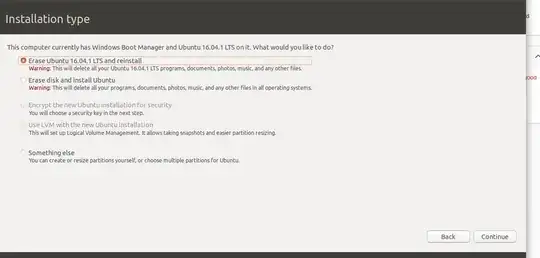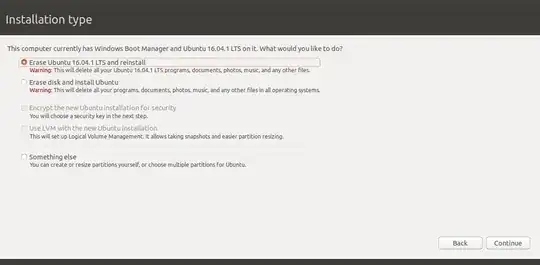After much, much trying to upgrade my computer from 16 to 18 on Ubuntu, I got it to boot off a USB stick.
The question now is: "If I follow the directions, will I lose all my prior work that is on my hard drive?"
I am far enough long in the process that I now get this option:

Do I read this right?
Option #1 (erase and reinstall) will destroy all of the files, of any sort, that are Ubuntu-specific on my hard drive when it does a fresh install; or
Erase disk and install ubuntu certainly erases the disk as its approach?
It seems to hinge on the exact wording. It seems to me it says "all user documents, files, code, etc. gets wiped clean". But, for the first option, "it will delete all your Ubuntu 16.4 LTS programs, photos, music, and any other files" means it will erase ONLY those files that support the OS itself, no matter their type- but sll user files are preserved.
More simply, if I choose #1, are all of my Windows and Ubuntu user files preserved, and all that's cleared are files directly associated with Ubuntu, but nothing more?
